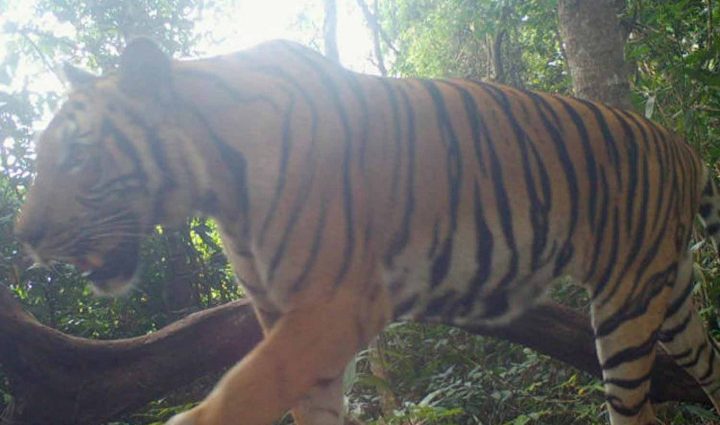
The government has welcomed the notion that Thailand is now recognised as a leader in Southeast Asia’s efforts to protect wild tigers.
The recognition stems from the country’s achievement in protecting royal tigers (Panthera tigris), which has led to a significant increase in their population.
Adult royal tigers in Thailand are now estimated to number between 179 and 223, which is about 149 higher than the number recorded in 2022, government spokesman Chai Wacharonke said on Wednesday, citing Natural Resources and Environment Ministry figures.
These figures were presented at the Sustainable Finance for Tiger Landscapes Conference, held on Monday in Paro, Bhutan, and earned Thailand praise as a leader in tiger conservation, said Mr Chai.
Thailand’s success was also lauded as an example of tiger conservation for other countries, he said. “The increase in royal tiger numbers in Thailand is also an indicator of how good the country’s ecosystem is,” said Mr Chai.
Prime Minister Srettha Thavisin gives all credit to all parties involved in the work which has led to this success in tiger conservation, said Mr Chai. “The PM believes Thailand will continue to succeed while improving its tiger conservation work so as to become a strong leader in this field and set the bar for royal tiger conservation in the region,” he said.
The rise in the royal tiger population in Thailand follows the implementation of the government’s second national operation plan, which began in 2022 and will continue until 2034, said Mr Chai. Three goals have been set, he said.
First, forest and wildlife protection standards in the Western Forest Complex (Wefcom) will continue and be raised to the next level. Wefcom covers about 18,000 square kilometres and is extended into Myanmar border along the Tennaserim Range.
Second, the government will continue raising its capacity to track the actual royal tiger population in Dong Phayayen–Khao Yai Forest Complex, a Unesco World Heritage site, through the continuous improvement of forest protection work.
Third, the royal tiger population in Kaeng Krachan, Phu Khieo-Nam Nao and Khlong Saeng-Khao Sok forest complexes will have to increase.

